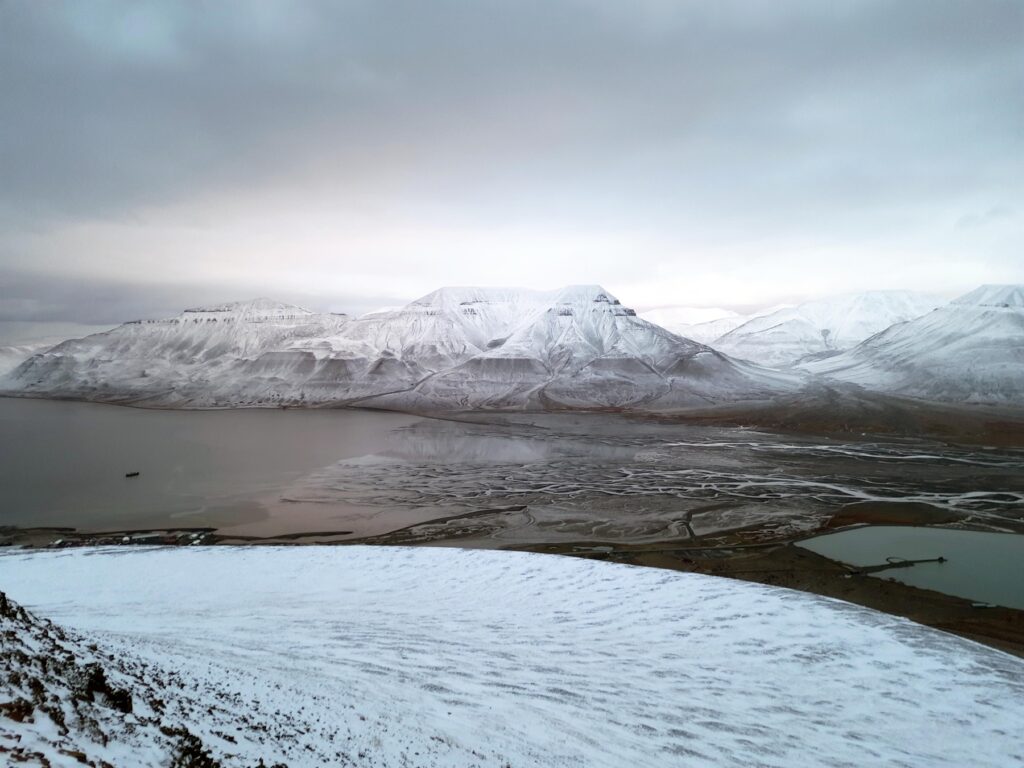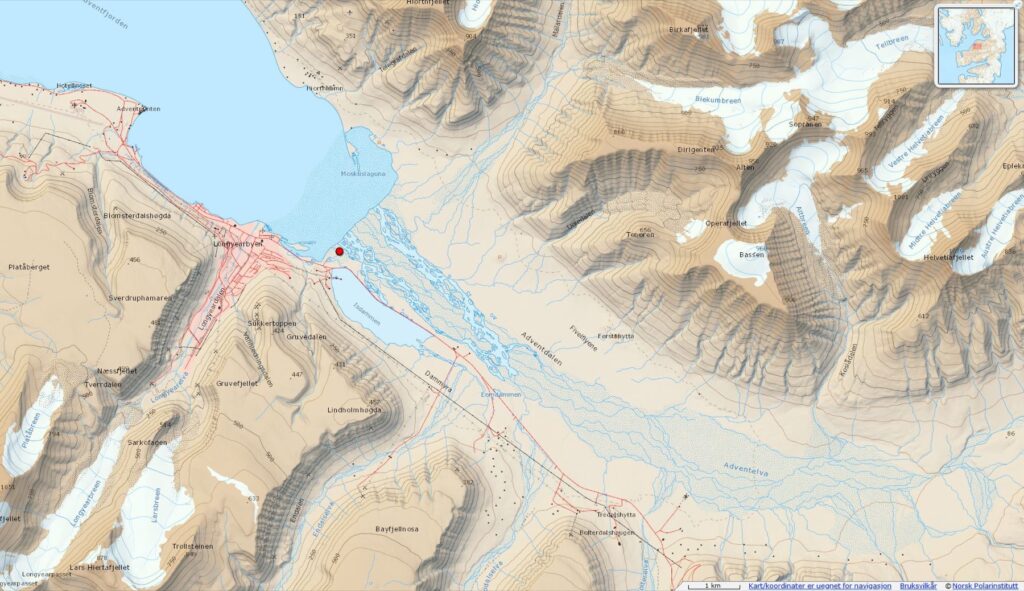Close to the end of the runway, you can find nice fossil beach ridges. They can be seen as sea-parallel lines on land, being formed by variations in vegetation or forming elongated elevations. The glaciers on Svalbard were well beyond a thousand metres thick during the last ice age, and the weight of the ice pressed the earth crust down by almost two hundred metres. When this ice disappeared, the crust started to pop up again. The result was land uplift and consequently a retreating shoreline, leaving traces of former beaches such as beach ridges and occasionally driftwood, whalebones and seashells inland. We know the age of some of these beach ridges by the occurrence of pumice, vulcanic rocks that can float and have been deposited on Svalbard’s coasts some 6000 years ago. 10 000 year old whalebones and mummified shells can be found in Bolterdalen (see there). The beach ridges here at Vestpynten are covered by vegetation and no whale bones visible, but both pumice and whalebones they might also exist here.
The Longyearbyen Field Guide
We are a group of scientists and Svalbardians who want to share our knowledge about the vicinity of Longyearbyen with you. This app is non-commercial and meant for locals, guides, tourists and everyone interested in science.
It is initially based on the book “The Geology of Longyearbyen” and supported by the Svalbard environmental protection fund, The University Centre in Svalbard, Store Norske Spitsbergen Kulkompani and HDpublish.
We appreciate all of the voluntary contributions and support from all authors and initiators for making this app possible.




